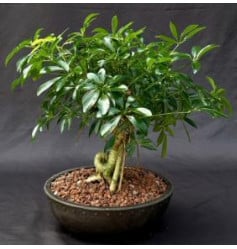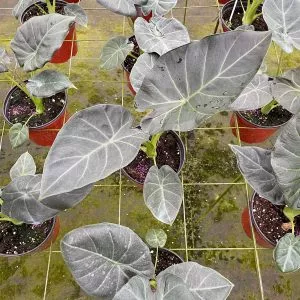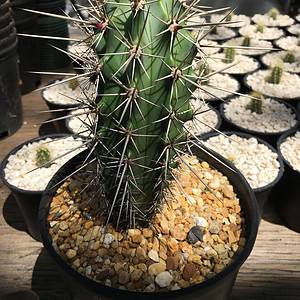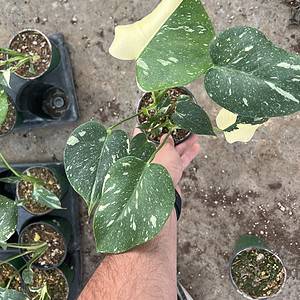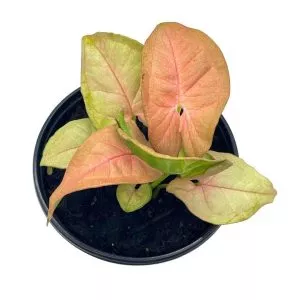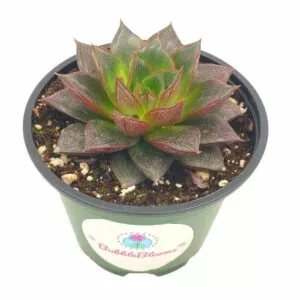No products in the cart.
Are you looking for a great subtropical plant herb for beginners? Then look no further than the basket plant, the Callisia fragrans.
It is a visually stunning plant with its draping stems and bromeliad look and has medicinal properties for treating inflammation, prostate cancer, and other metabolic diseases. It is also rich in vitamin C and micronutrients.
Plant Name: Callisia fragrans
Other Name: Basket plant, false bromeliad, inch plant, octopus plant
Plant Type: Perennial Herb
Native Areas: South America
Light Requirement: Partial sun
Watering: Moist but not waterlogged
Fertilizer: Liquid fertilizer
Toxicity: Not listed as toxic, but the sap can cause skin irritation
Temperature: 70°F and above
Propagation: Stem cuttings
Growth: 6-12 inches tall
Soil Type: Gritty loam soil
USDA Hardiness Zones: 10b-11
More About Callisia Fragrans
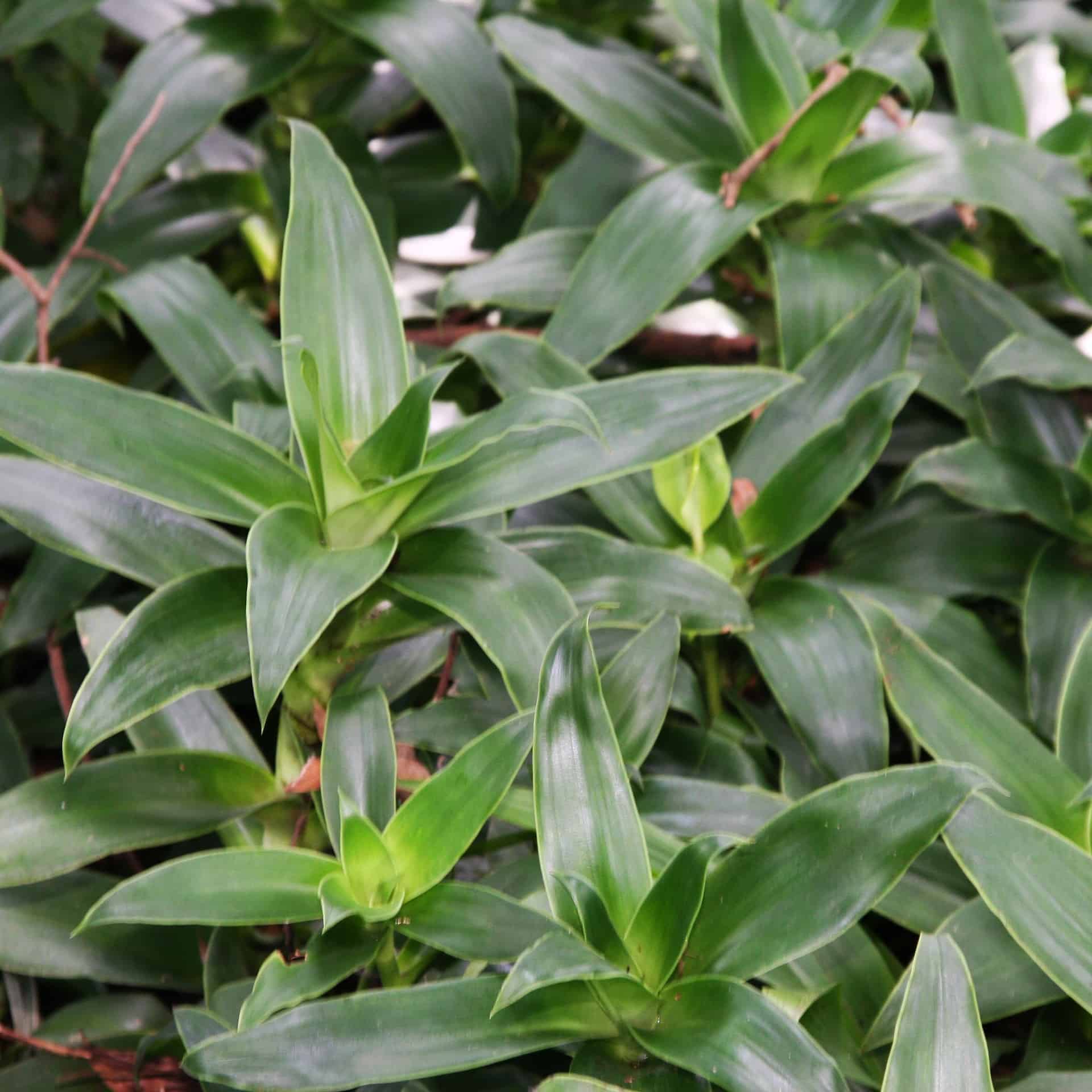
The Callisia fragrans, with common names basket plant, chain plant, and octopus/inch plant, are native to South America in Mexico. It is a subtropical plant performing its best in cool climates in zones 9-11.
You may also see these flowering plants sold as the false bromeliad as the foliage lays down, giving it a bromeliad cluster look. Still, the foliage resembles a Dracaena with its upright leaf pattern in the partial sun.
Still, the name chain plant resembles the creeping stems that root easily when touching the ground. On other occasions, people call it the octopus plant as it sends out runner-like stems. The stems can reach up to 35 inches in length.
You see clusters of leaves form on the fleshy stems, looking like a miniature version of the basket plant. Sometimes it develops air roots, and a simple snip provides new plants. The name basket plant refers to the beautiful flowers with three elongated petals that emerge from the stems.
The base of the flower looks like a basket in white, each with a long tendril. The flowers have a fragrance that is unusual but worth cultivating. You can find two types available, the first called Callisia fragrans and the other one Callisia fragrans Melnikoff.
Chain Plant Care Guide
These outdoor plants are mostly carefree and hardy. The important thing is to provide the wonder herb plant with water and the correct temperature. But for growing basket plants as prized specimens, follow our detailed tips here.
The Best Soil For These Flowering Plants
For growing basket plants, provide gritty loam soil that is soft and easy to squeeze into a ball when wet. Still, it also needs to break apart easily.

You can create a potting medium with coarse sand, but it should not run through your fingers like pure sand. Add some compost to the mix for added nutrients for the best results.
While the inch plants can tolerate different pH ranges, the acidity should be low at 6.0, with the alkaline up to 7.8.
Lighting and Temperature Needs For The Inch Plant
When growing outdoors, the sprawling plant prefers warmer climates. The Callisia plants growing indoors thrives in a warm room with temperatures of 70°F and above.
In winter, provide your Callisia fragrant herb with temperatures between 50°F to 60°F for a short time. It will help your plant indoors to have a natural rest period.

With the proper temperature range, your subtropical species thrive. For the plant, Callisia, the best light is a bright light, as it allows for a purple coloration on the foliage.
When your plant receives up to 4 hours of direct sunlight per day with afternoon sunlight protection, you see those long flowering stems with beautiful blooms.
Still, too much sun can also scorch the gorgeous foliage. When not receiving enough direct sunlight indoors, provide your plant with artificial light to prevent poor growth.
Watering and Humidity For Subtropical Species
For the basket plant, even moisture is ideal. Still, an established Callisia fragrans can tolerate some drought for a short while.
But your young plants will need more watering. When you water the plant, moisten the soil well but let the excess water drain through the drainage holes.
Never leave your plant standing in water; allow the soil to dry before watering again. Unlike other tropical species, the basket plant is not picky regarding humidity.
You need not add a humidifier or pebble tray as the basket plant is happy among other humidity-loving plants.
Fertilizing Callisia Fragrans

The easiest way to fertilize your plants indoors is by using liquid fertilizer. Preferably use a balanced low-potency once, like the 3-3-3.
Or you can use one made for flowering plants but avoid using a high-nitrogen one as it will lead to new growth instead of flowering.
Alternatively, when grown indoors, use a slow-release feed not high in nitrogen. You can work in organic compost for plant care outside to provide healthy growth.
Pruning Callisia Fragrans
You only prune when the stems get too long, and you can trim off the tips before a leaf node. You can then take the cutting to grow a new plant.
Alternatively, you can thin out the growth to encourage bushier growth. As a plant grows outside, it can rapidly spread, filling up an area.
You can prune the stems back, and when they set down new roots, you can prune everything up to the rooting point.
-
Free Shipping$7.99 – $11.09Sold By: CZ Grain
In stock
Mouse Melon Seeds
Rated 4.60 out of 5 based on 156 customer ratings00Sold By: CZ Grain -
Free Shipping$306.79Sold By: BONSAI WORLD LLC
In stock
Hawaiian Umbrella Bonsai Tree Coiled Trunk Banyan Style
Sold By: BONSAI WORLD LLC -
$39.99Sold By: BubbleBlooms
In stock
Alocasia Regal Shield, 6 inch, Black Elephant Ear, Upright
Only 97 available and it’s in 1 people’s basketRated 4.81 out of 5 based on 279 customer ratings00Sold By: BubbleBlooms -
Potting Callisia Fragrans
You can repot the Callisia fragrant annually as the plant does not grow larger than a 6-inch pot. Yet, it can spread rapidly, and refreshing the soil helps.
But if you use a larger container, do not go more than one inch wide. Another extraordinary thing is that the basket plant looks fabulous in hanging baskets.
Still, if you notice the bottom leaves falling off, it is a sign that your plant is getting old, and taking a cutting will provide you with a new plant.
Propagating Callisia Fragrans
The best way to ensure you always have this gorgeous plant is through stem cuttings. Another great thing is when you snip the aerial roots off; you do not even need rooting hormone as it roots fast by itself in moist soil.
You can plant the aerial root a bit deeper than the root system, about 1/4 inch from the leaf base. Interestingly, when it grows in the wild, it sends tentacle stems up to 35 inches away. You will then see roots forming along different points of the stem forming new plants.
We recommend spacing up to six feet apart for growing basket plants outside, allowing room to spread.
Callisia Fragrans Varieties
As mentioned in the beginning, you can find two types of Callisia fragrans species:
Callisia fragrans
The first type of Callisia is one with all green leaves that can turn purple exposed to light.
Callisia fragrans Melnikoff
The Melnikoff is a variegated variety with lighter green edges on the leaves, and it can develop stripes. In bright light, the foliage also turns purple with some green color.
Callisia Fragrans Common Pests and Diseases
While a hardy plant, insects, and diseases can still bother the Callisia fragrans, the main concern is overwatering, leading to root rot. It is best to avoid standing water in a saucer and remove it.
Also, ensure the soil drains well, and the container has enough drainage holes. When overwatered, the first sign is brown leaves forming on the tips. But we do not recommend removing the leaf tips.
The only pests you mostly find are adult mealybugs, and other insects are scale insects. For both these pests, you can use a cotton swab dipped in rubbing alcohol. Or you can use neem oil or insecticidal soap.
Neem oil is a great way to prevent these segmented oval insects from spreading, and you can easily spray plants with it. So, as you can see, growing a basket plant is not too difficult.
Frequently Asked Questions
The plant is a wonder herb with various medicinal properties for treating burns, cancer, dental problems, and arthritis when looking at folk medicine.
To make your plant bushy, it helps to trim out the growth slowing for new growth to appear.
Yes, but only in folk remedies found in Europe. It has antiviral and antimicrobial properties. Sometimes people use it to treat skin diseases. Still, the sap can cause skin irritation in some people.
The best is to use a damp cloth to wipe down the leaves, leaving them shiny and green.
Whether you want to buy, sell, or simply reach out to other plant enthusiasts, Plantly is the right place to be!
-
$24.99Sold By: BubbleBlooms
$29.99In stock
Fern Assortment, Foliage set, fishtail, Heart-Fern, Largeleaf maidenhair, Parsley, premium succulent collection, in 2 inch pots, plant gift
Rated 4.81 out of 5 based on 279 customer ratings00Sold By: BubbleBlooms -
$20.00Sold By: BubbleBlooms
$25.00In stock
Syngonium Pink, podophyllum, in 4 inch pot
Rated 4.81 out of 5 based on 279 customer ratings00Sold By: BubbleBlooms -
$9.99Sold By: BubbleBlooms
In stock
Echeveria purpusorum, 3 inch Urbinia Purpusii, Dudleya Purpusii, Rare Succulent, Variegated plant, Dark Black Echeveria, Rosette Shape
Only 11 available and it’s in 1 people’s basketRated 4.81 out of 5 based on 279 customer ratings00Sold By: BubbleBlooms

